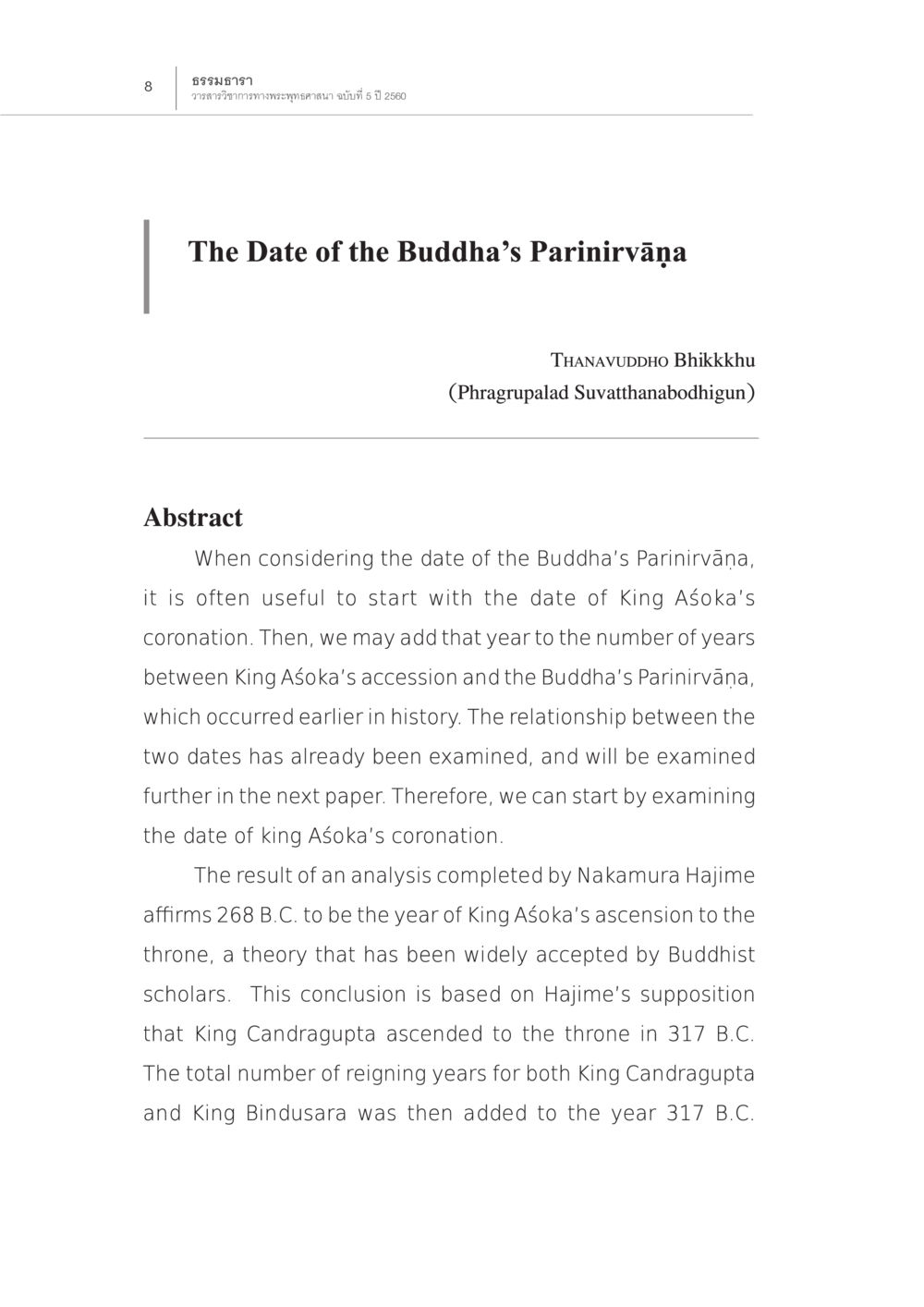วันที่พระพุทธเจ้าปรินิพพาน : หน้า 4/41
ปีพุทธปรินิพพาน (1) : หน้า 4/41 การวิเคราะห์วันที่พระพุทธเจ้าปรินิพพานเชื่อมโยงกับการสถาปนาของพระเจ้าอาชาโศก
2 ครั้ง

สรุปเนื้อหา
การพิจารณาวันที่ปรินิพพานของพระพุทธเจ้านั้นมักเริ่มจากปีสถาปนาของพระเจ้าอาชาโศก หลังจากนั้นสามารถบวกปีการครองราชย์กับปีของการปรินิพพาน ซึ่งการวิเคราะห์นี้ได้รับการสนับสนุนจากการศึกษาที่ผ่านมาทำโดยนา คา มูระ ฮาจิ เมะ โดยยืนยันว่า ปี 268 ก่อนคริสต์ศักราชเป็นปีที่พระเจ้าอาชาโศกขึ้นครองบัลลังก์ ทฤษฎีนี้ได้ถูกยอมรับในหมู่นักวิชาการพระพุทธศาสนา โดยพิจารณาจากการพระราชพิธีขึ้นครองราชย์ของพระเจ้าชันทรากุสตาในปี 317 ก่อนคริสต์ศักราช
หัวข้อประเด็น
-วันที่พระพุทธเจ้าปรินิพพาน
-พระเจ้าอาชาโศก
-การวิเคราะห์ประวัติศาสตร์พระพุทธศาสนา
-การครองราชย์ของพระราชา
ข้อความต้นฉบับในหน้า
ธรรมЋารา
วาระวิจารณ์พระพุทธศาสนา ฉบับที่ 5 ปี 2560
The Date of the Buddha’s Parinirvāṇa
THANAVUDDHO Bhikkku
( Phragrupalad Suvatthanabodhigun)
Abstract
When considering the date of the Buddha’s Parinirvāṇa,
it is often useful to start with the date of King Aśoka’s
coronation. Then, we may add that year to the number of years
between King Aśoka’s accession and the Buddha’s Parinirvāṇa,
which occurred earlier in history. The relationship between the
two dates has already been examined, and will be examined
further in the next paper. Therefore, we can start by examining
the date of king Aśoka’s coronation.
The result of an analysis completed by Nakamura Hajime
affirms 268 B.C. to be the year of King Aśoka’s ascension to the
throne, a theory that has been widely accepted by Buddhist
scholars. This conclusion is based on Hajime’s supposition
that King Candragupta ascended to the throne in 317 B.C.
The total number of reigning years for both King Candragupta
and King Bindusara was then added to the year 317 B.C.
หนังสือที่เกี่ยวข้อง
Load More









































